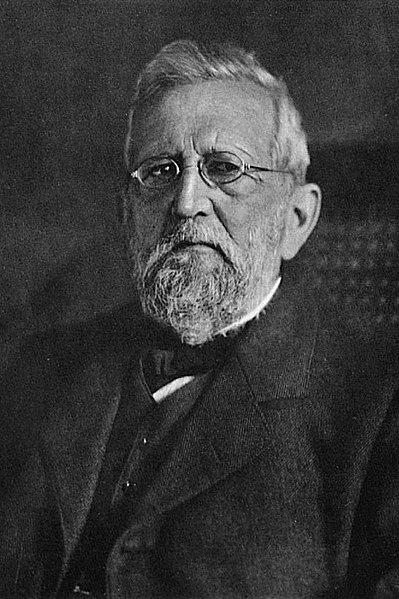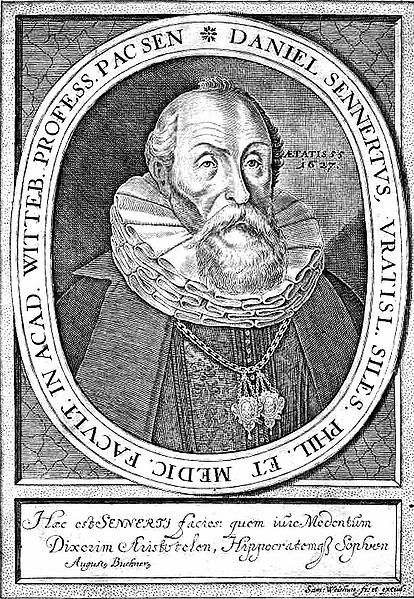This is me, Jim Lehane (1981-?). I plan on receiving my PhD from the University of Utah in 2013.
 |
| Me |
 |
| Tony on the shore of the Gulf of California. Photo courtesy of Crystal Hammer. |
Tony received his PhD from Rice University in 1974 with a dissertation entitled "Geologic History of the Abyssal Benthos: Evidence from Trace Fossils in Deep Sea Drilling Project Cores". His primary focus of research is ichnology and is well known for coining the phrase "ichnofabric".
Tony's PhD graduate advisor was Dr. John Warme who taught at Rice University and the Colorado School of Mines.
 |
| John Warme's courtesy of The Colorado School of Mines. |
John received his PhD from the University of California at Los Angeles (UCLA) in 1966. His primary areas of focus are stratigraphy, paleoecology, and ichnology.
John's PhD graduate advisor was Dr. Clarence A. Hall who is a retired professor for UCLA. |
| Clarence Hall's courtesy of UCLA |
Clarence received his PhD from Stanford in 1956 with a dissertation entitled "The Geology of the Pleasanton area, Alameda County, California".
Clarence's PhD graduate advisor was Dr. Siemon (Si) Muller (1900-1970) who was a professor at Stanford University.
 |
| Si Muller courtesy of Silberling, 2007 |
Si received his PhD from Stanford in 1930. He is best known for coining the phrase "Permafrost". He was also one of the few people elected to the presidency of The Paleontological Society who never published a description of a fossil.
Si's PhD graduate advisor was Dr. James Perrin Smith (1864-1931) who was a professor at Stanford University.
 |
| James Perrin Smith courtesy of The National Academy of Sciences |
James received with PhD from Goeettingen, Germany in 1892. He is best known for his study of Mesozoic ammonites.
James's PhD graduate advisor was Dr. Adolf Von Koenen (1837-1915) who was a professor in Goeettingen, Germany.
 |
| Adolf Von Koenen courtesy of Wikipedia |
Adolf received his PhD from Friedrich-Wilhelms-Universität, Berlin (later Humboldt University of Berlin) in 1865. His dissertation is entitled "De stratis helmstaedtiensibus oligocaenis inferioribu".
Adolf's PhD graduate advisor was Heinrich Ernst Beyrich (1815-1896) who was a professor at Friedrich-Wilhelms-Universität.
 |
| Heinrich Ernst Beyrich courtesy of Wikipedia |
Heinrich recieved his PhD in 1837 at the University of Berlin (UB), with a dissertation entitled: De goniatitis in montibus rhenanis occurrentibus. He is known as one of the founders of the German Geological Society and proposed the term Oligocene.
Heinrich's PhD graduate advisor was most likely Christian Samuel Weiss (1780-1856) from the University of Berlin and Georg August Goldfuss (1782-1848) from the University of Bonn.
| Georg August Goldfuss courtesy of Wikipedia |
 |
| Christian Samuel Weiss courtesy of Humboldt University |
Christian received his PhD in 1801 from the Georg received his PhD in 1804 from the University of Leipzig. University of Erlangen. His advisor is unknown.


Christian's PhD advisor was Abraham Gottlob Werner (1750-1817).
Abraham received his PhD in 1774 from the University of Leipzig. Abraham is known for advancing the "Neptunian" view of the earth, which stated that all rocks had been deposited in a primordial ocean.
Abraham's PhD advisor was Johann Carl Gehler (1732-1796). Johann received his PhD in 1758 from the University of Leipzig.
Johann's PhD advisor was Christian Gottlieb Ludwig (1709-1773). Christian received his PhD in 1737 from the University of Leipzig.

Christian's advisor was Augustin Friedrich Walther (1688-1746). Augustin received his PhD in 1712 from the University of Wittenberg.
 |
| Augustin Friedrich Walther |

Augustin's advisor was Johann Gottfried von Berger 1659-1736) who received his MD in 1682 from the
University of Jena.
University of Jena.

Johann's advisor was Augustin Heinrich Fasch (1639-1690) who received his MD in 1663 from the University of Jena.
Augustin's advisor was Werner Rolfinck (1599-1673) who received his MD in 1625 from the University of Jena. Werner had 2 advisors.
 |
| Werner Rolfinck courtesy of www.med.uni-jena.de |
The first one was Daniel Sennert (1572-1637) who The second one was Adriaan van den
received his MD in 1599 from Leucorea University Spieghel (1578-1625) who received his MD
in Wittenberg. in 1603 from the University of Padua.
 |
| Adriaan van den Spieghel |
 |
| Daniel Sennert |


Daniel's advisor was Jan Jessenius (1566-1621) who
received his MD in 1591 from Leucorea University in Wittenberg.
 |
| Jan Jessenius |
Both Jan's and Adriaan's advisor was Girolamo (Hieronymus Fabricius) Fabrici d'Acquapendente (1537-1619) who received his MD in 1559 from the University of Padua. He is known as the Father of Embryology.
 |
| Hieronymus Fabricius courtesy of Wikipedia |

 |
| Gabriele Falloppio |

Gabriele's advisor was Antonio Musa Brasavola (1500-1555) who received his MD in 1520 from the University of Ferrara.
 |
| Antonio Musa Brasavola |
Antonio's advisor was Niccolo (Leoniceno) da Lonigo (1428-1524) who received his MD in 1453 from the University of Padua.
 |
| Niccolo (Leoniceno) da Lonigo |

Niccolo's advisor was Pietro Roccabonella Veneziano (1427-1491) who received his MD in 1455 from the University of Padua.


Pietro had two advisors. One was Gaetano da Thiene The second was Sigismondo Polcastro.
(1387-1465) Gaetano received his his degree from the (1397-1473) who recieved his degree from the
University of Padua. University of Padua. His advisor is unknown.

Gaetano's advisor was Paulus (Paul of Venice) Venetus (1368-1428) who received his degree from the University of Padua, although he likely studied with Pierre d'Ailly at the University of Paris.
Paulus' advisor was Pierre d'Ailly (1351-1420) who received his doctorate in theology in 1381 from the University of Paris.
 |
| Pierre d"Ailly |
Although the Academictree.org website says that the lineage goes on I believe it is tenuous from this point forward. And even further beyond those things get really iffy. Although if you keep following this line, eventually you get to Jesus.
---------------------------------------------------------------------------------
Footnotes
I was stuck on Clarence Hall for a while and even got a copy of his dissertation to find out his advisor who nobody really seemed sure of. Even the dissertation did not specifically call it out. But upon finding out he was still alive, I just emailed him and my suspicions were immediately proved correct (very fast email response) that it was Si who was his advisor. Further work was easy on the internet, since there are a couple of biographies online that spell out everything I needed to keep going back until I get to Adolf von Koenen. He was a little more of an enigma to crack until I got his dissertation and was able to search for his name along with those mentioned in it (even though it was in Latin). I found a connection with one of the prominent names mentioned in his Vita at the end and found him to be mentioned as a student of Beyrich's.
Although Beyrich's dissertation is readily available online (in Latin) it is difficult to make out who his advisor was. He studied under both Weiss (a mineralogist) and Goldfuss (a paleontologist and a zoologist). I would assume it was Goldfuss since he is noted as turning Beyrich onto Paleontology but Beyrich received his degree at Berlin where Weiss taught while Goldfuss taught at Bonn. This is why I put them both down.
This is where I hit the goldmine. While searching for Christian Samuel Weiss I stumbled upon the Mathematics Genealogy Project and the Academictree.org which allowed me to follow my family tree back to the 1400's. I used both of these sources and when they agreed I followed that line further back.
Once you hit a certain point back it appeared that several people along my lineage received MD's as if they were PhD's with advisors. This is contrary to today where the MD is quite distinct from a PhD. And even further back from that most scholars were theologians and philosophers so it is no wonder that my lineage could be traced back to Jesus, even if I do find that a bit tenuous.

This is great information for students. This article is very helpful i really like this blog thanks. I also have some information relevant for Dissertation Writing.
ReplyDeleteDissertation Writing
Jan Jesenius most important philosophical work was Zoroaster (1593), a work of universal philosophy which attempted to recover the lost wisdom of the ancients.
ReplyDeleteAkira Kaneda Jacket
Thanks Kristina!
DeleteQuite a history. It is really great to trace back the history of our teachers to make sure that we are taught by great minds not just accidental teachers.
ReplyDeleteAcademic Dissertations